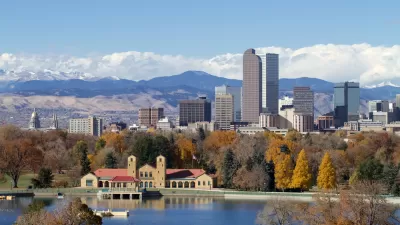Representing the Global Cities Initiative, Richard M. Daley and Bruce Katz report on the current status of Miami's economy and offer tips they deem necessary to boost the regional economy into true "global" status.
Miami is known for its vibrant culture, historic architecture, and pleasant climate. More than just an exciting travel destination, however, Miami is a prime example of a flourishing global metropolis which Daley and Katz, chair and director of the Global Cities Initiative, respectively, believe is "well-positioned to meet the post-recession challenge and prosper in a more globally engaged U.S. economy."
This seems like a natural next step for a city who "has the largest foreign-born share of its population among the top 100 metros (38.8 percent)" and whose travel and tourism industry "generates over 25 percent of the region's exports." Furthermore, due to the region's geographical location, Miami is "the gateway for one-third of trade between the U.S. and Latin America." Trade in the region is booming, producing "over 14 percent of metropolitan GDP, the fourth highest of any region in America."
With these numbers in mind, Daley and Katz discuss what it will take for Miami "to maintain and extend its unique global position." Suggestions include advancing efforts to become a center for advanced production and services, and further engagement with both national and international markets to boost trade and production.
FULL STORY: Seizing Miami’s ‘global moment’

Study: Maui’s Plan to Convert Vacation Rentals to Long-Term Housing Could Cause Nearly $1 Billion Economic Loss
The plan would reduce visitor accommodation by 25,% resulting in 1,900 jobs lost.

North Texas Transit Leaders Tout Benefits of TOD for Growing Region
At a summit focused on transit-oriented development, policymakers discussed how North Texas’ expanded light rail system can serve as a tool for economic growth.

Why Should We Subsidize Public Transportation?
Many public transit agencies face financial stress due to rising costs, declining fare revenue, and declining subsidies. Transit advocates must provide a strong business case for increasing public transit funding.

How to Make US Trains Faster
Changes to boarding platforms and a switch to electric trains could improve U.S. passenger rail service without the added cost of high-speed rail.

Columbia’s Revitalized ‘Loop’ Is a Hub for Local Entrepreneurs
A focus on small businesses is helping a commercial corridor in Columbia, Missouri thrive.

Invasive Insect Threatens Minnesota’s Ash Forests
The Emerald Ash Borer is a rapidly spreading invasive pest threatening Minnesota’s ash trees, and homeowners are encouraged to plant diverse replacement species, avoid moving ash firewood, and monitor for signs of infestation.
Urban Design for Planners 1: Software Tools
This six-course series explores essential urban design concepts using open source software and equips planners with the tools they need to participate fully in the urban design process.
Planning for Universal Design
Learn the tools for implementing Universal Design in planning regulations.
City of Santa Clarita
Ascent Environmental
Institute for Housing and Urban Development Studies (IHS)
City of Grandview
Harvard GSD Executive Education
Toledo-Lucas County Plan Commissions
Salt Lake City
NYU Wagner Graduate School of Public Service



























